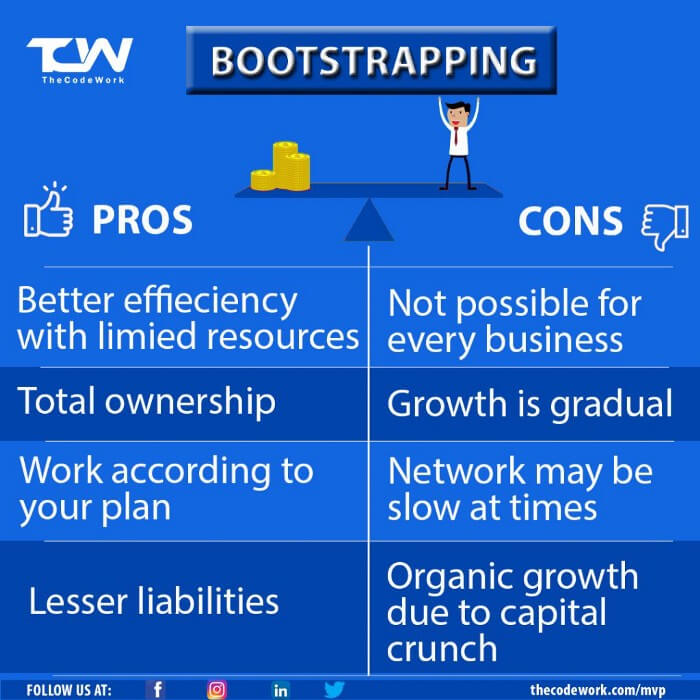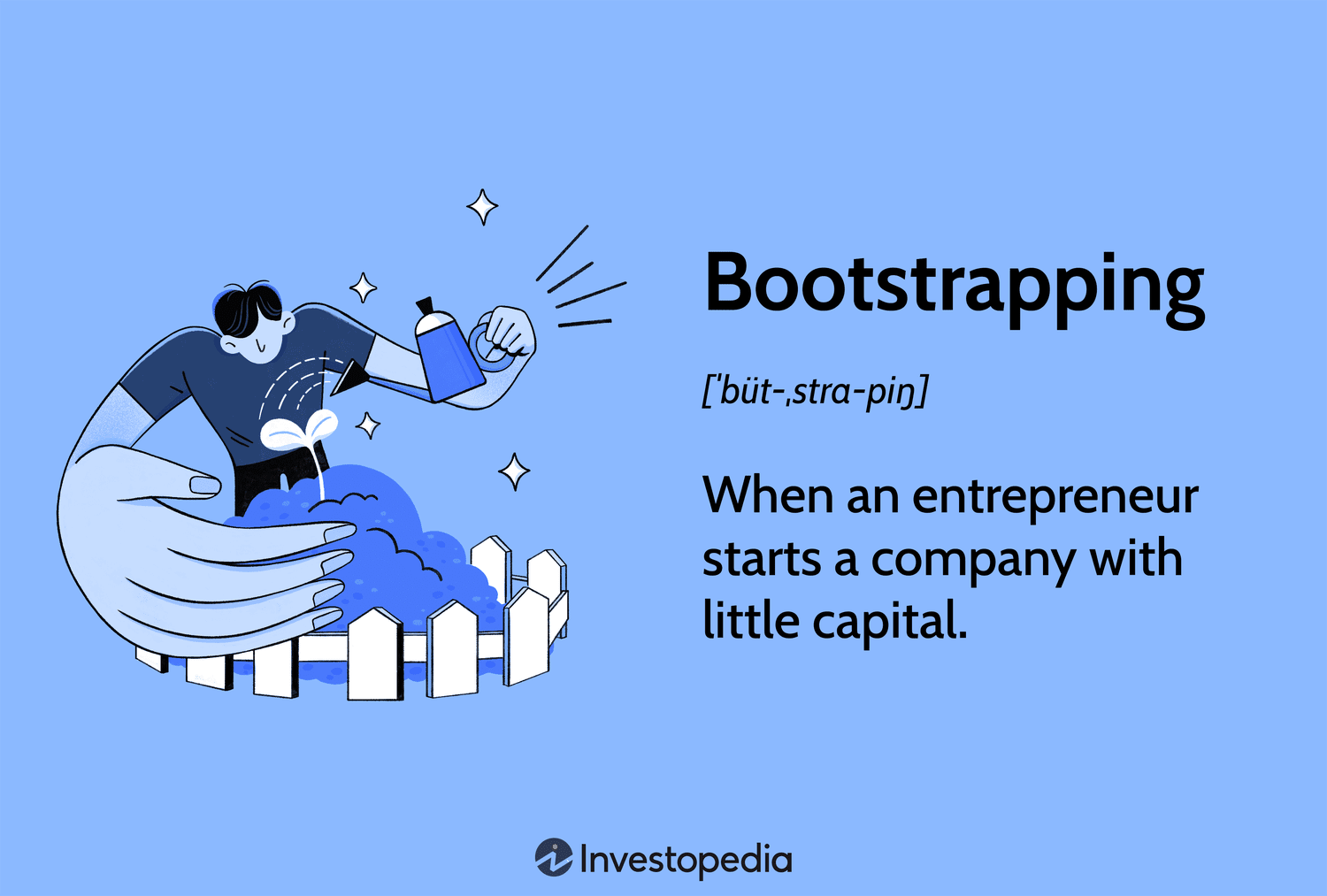Bootstrapping a Business: A Comprehensive Guide
Starting a business is a thrilling yet daunting endeavor, and many entrepreneurs find themselves at a crossroads when it comes to financing their venture. Bootstrapping is a powerful approach that allows entrepreneurs to build and grow their businesses using personal savings or revenue generated from operations, without relying on external funding sources. In this article, we’ll explore the essentials of bootstrapping a business, including its advantages, challenges, and effective strategies for success.
:max_bytes(150000):strip_icc()/bootstrapping.asp-FINAL-568f1e65d4a34316abb9f8741b96d179.png)
Understanding Bootstrapping
What is Bootstrapping?
Bootstrapping refers to the practice of starting and growing a business with minimal financial resources. Entrepreneurs who bootstrap their businesses often rely on their savings, reinvest profits, and use creative strategies to minimize costs. This approach contrasts sharply with seeking external funding from investors, venture capitalists, or bank loans.
Why Choose Bootstrapping?
Bootstrapping is not merely a financial strategy; it’s a mindset that empowers entrepreneurs. Here are some compelling reasons to consider bootstrapping:
Control Over Your Business
When you bootstrap, you maintain complete control over your business. Without external investors, you are free to make decisions that align with your vision and values, without the pressure to deliver quick returns. This control can foster innovation and creativity, allowing you to pivot or iterate on your business model as needed.
Flexibility and Agility
Bootstrapped businesses tend to be more agile than their investor-backed counterparts. Without the constraints of external funding requirements, you can quickly adapt to changing market conditions, test new ideas, and respond to customer feedback. This flexibility can be a significant advantage in today’s fast-paced business environment.
Building a Stronger Business Model
By relying on revenue generated from sales, bootstrapped entrepreneurs are compelled to focus on creating a viable business model from day one. This approach encourages sustainable growth and long-term success, rather than chasing short-term profits or funding rounds.
Advantages of Bootstrapping
Bootstrapping a business has several notable advantages:
Financial Independence
Bootstrapping allows entrepreneurs to retain ownership and avoid diluting their equity by bringing in external investors. This independence means that you keep the profits and can reinvest them back into the business, fostering growth on your terms.
Encourages Frugality
When resources are limited, bootstrapped entrepreneurs learn to make every dollar count. This frugality can lead to more thoughtful spending and better resource management, which ultimately benefits the business in the long run. You’ll be more inclined to invest in areas that provide the highest return on investment.
Improves Resourcefulness
Bootstrapping forces entrepreneurs to be resourceful and innovative. You’ll often find creative solutions to problems that may arise, which can lead to unique offerings and competitive advantages in the marketplace.

Challenges of Bootstrapping
While bootstrapping offers many advantages, it also comes with its share of challenges:
Limited Financial Resources
The most significant drawback of bootstrapping is the constraint of financial resources. Limited funds can restrict your ability to invest in marketing, hire talent, or scale quickly. Entrepreneurs must be strategic and prioritize spending to ensure the business remains viable.
Slower Growth Potential
Without external funding, bootstrapped businesses may experience slower growth compared to those with significant investment backing. While this approach fosters sustainable growth, it may also limit opportunities to capture market share quickly.
Increased Pressure and Stress
Running a bootstrapped business can be incredibly stressful. The pressure to generate revenue and maintain cash flow can weigh heavily on entrepreneurs, especially in the early stages. This stress can impact decision-making and overall well-being.
Strategies for Successful Bootstrapping
To maximize the benefits of bootstrapping, entrepreneurs can employ several effective strategies:
Start Small and Scale Gradually
It’s crucial to start small and focus on developing a Minimum Viable Product (MVP). This strategy allows you to test your business idea with minimal investment and validate the market demand before scaling. Once you have a proven concept, you can gradually expand your offerings and operations.
Focus on a Minimum Viable Product (MVP)
An MVP is the simplest version of your product that still delivers value to customers. By launching an MVP, you can gather feedback, make necessary adjustments, and reduce the risk of investing in a fully developed product that may not meet market needs.
Validate Your Business Idea
Before fully committing to your business concept, validate it through customer interviews, surveys, and market research. Understanding your target audience’s pain points and preferences can inform product development and marketing strategies, ensuring you’re building something that resonates.
Leverage Personal Savings and Income
Many successful entrepreneurs fund their startups with personal savings or by maintaining their current jobs while launching their ventures. This approach provides a financial safety net and allows you to reinvest profits back into the business.
Utilize Free or Low-Cost Tools
Take advantage of free or low-cost tools and resources available online. Many platforms offer affordable solutions for everything from project management and accounting to marketing and design. Tools like Trello, Canva, and Mailchimp can significantly reduce operational costs.
Build a Strong Network of Support
Networking is essential for bootstrapped entrepreneurs. Surrounding yourself with supportive peers, mentors, and industry professionals can provide valuable insights, resources, and encouragement. Attend industry events, join online forums, and engage with local entrepreneurial communities to expand your network.
Conclusion
Bootstrapping a business is a powerful strategy that can lead to sustainable growth and financial independence. By leveraging your resources wisely and maintaining control over your business, you can navigate the challenges of entrepreneurship with confidence.
In the next part of this article, we will delve deeper into real-life examples of successful bootstrapped businesses, tips for maintaining motivation, and answers to frequently asked questions about bootstrapping. Stay tuned!
FAQs
What is the difference between bootstrapping and seeking investment?
Bootstrapping involves funding your business using personal savings or revenue, while seeking investment means bringing in external funds from investors or venture capitalists.
How long should I expect to bootstrap my business?
The duration of bootstrapping varies based on the business model and industry. Some entrepreneurs may bootstrap for a few months, while others may choose to do so for several years.
What are the first steps to bootstrap my business?
Start by identifying your business idea, validating it through market research, and creating an MVP. Then, leverage your savings and seek free resources to minimize costs.
Can I still seek investment if I start by bootstrapping?
Yes, many entrepreneurs choose to bootstrap initially and later seek investment as their business grows and requires additional funding.
What industries are best suited for bootstrapping?
Bootstrapping can be effective in various industries, especially those with low overhead costs, such as digital services, e-commerce, and software development.

By understanding the fundamentals of bootstrapping, you’ll be well-equipped to embark on your entrepreneurial journey with confidence.
Real-Life Examples of Successful Bootstrapped Businesses
Many successful companies have started from humble beginnings, relying on bootstrapping to fuel their growth. Here are a few notable examples:
1. Mailchimp
Mailchimp began as a side project for founders Ben Chestnut and Dan Kurzius in 2001. They initially funded the company with their savings and did not seek external investment. By focusing on customer needs and leveraging organic growth, Mailchimp grew to become a leading email marketing platform, now serving millions of users worldwide. The company remains privately owned, showcasing how bootstrapping can lead to sustained success.

2. Basecamp
Basecamp, a project management tool, was created by Jason Fried, Carlos Segura, and Ernest Kim. The founders funded the project using revenue from their web design firm, 37signals. They focused on building a product that solved real problems for their customers and prioritized profitability over rapid growth. As a result, Basecamp has maintained a strong position in the market, with a loyal customer base and significant revenue.
3. BambooHR
BambooHR, a human resources software provider, started when co-founders Ben Peterson and Ryan Sanders bootstrapped their company using their own savings and early customer revenue. By focusing on delivering an excellent user experience and listening to customer feedback, BambooHR quickly gained traction in the HR software space. The company has now grown significantly, proving that bootstrapped businesses can achieve impressive results.
Tips for Maintaining Motivation During Bootstrapping
Maintaining motivation while bootstrapping can be challenging. Here are some strategies to help you stay focused and inspired:
Celebrate Small Wins
Recognizing and celebrating small achievements can boost morale and motivate you to keep pushing forward. Whether it’s acquiring your first customer or reaching a sales milestone, acknowledging these victories can provide a sense of accomplishment and encourage continued effort.
Stay Connected with Your Network
Engaging with your network of mentors, peers, and fellow entrepreneurs can provide valuable support and encouragement. Sharing your challenges and successes with others can help alleviate stress and inspire new ideas.
Set Clear Goals
Establishing clear, achievable goals will keep you focused and motivated. Break down larger objectives into smaller, manageable tasks, and regularly assess your progress. This approach can help you stay organized and reduce overwhelm.
Practice Self-Care
Running a bootstrapped business can be stressful, so it’s essential to prioritize self-care. Regular exercise, healthy eating, and mindfulness practices can help maintain your physical and mental well-being. Taking time to recharge will ultimately enhance your productivity and decision-making.
Frequently Asked Questions About Bootstrapping
What is the best way to bootstrap a business?
The best way to bootstrap your business is to start with a clear idea, validate it through market research, and focus on developing an MVP. Use personal savings, reinvest profits, and seek free resources to minimize costs.
How long does it take to bootstrap a business?
The duration of bootstrapping varies depending on the business model and individual circumstances. Some entrepreneurs may bootstrap for several months, while others may choose to do so for years before seeking external funding.
Can bootstrapped businesses become successful?
Absolutely! Many successful companies, such as Mailchimp and Basecamp, started as bootstrapped businesses. By focusing on sustainable growth and maintaining control over their operations, bootstrapped entrepreneurs can achieve long-term success.
What are some common mistakes to avoid while bootstrapping?
Some common mistakes include underestimating costs, neglecting marketing, and failing to validate the business idea. It’s essential to conduct thorough research and plan carefully to avoid these pitfalls.
Is bootstrapping suitable for all types of businesses?
While bootstrapping can be effective for many industries, it is particularly well-suited for businesses with low overhead costs, such as software development, consulting, and e-commerce. Industries requiring significant upfront investment may find it more challenging to bootstrap successfully.
Conclusion
Bootstrapping a business is a challenging yet rewarding journey. By embracing a frugal mindset, leveraging your resources, and staying committed to your vision, you can create a sustainable business that reflects your values and goals.
As you embark on your entrepreneurial journey, remember that many successful companies have followed a similar path. With determination and resourcefulness, you can build a thriving business without relying on external funding.

By understanding the principles of bootstrapping, celebrating your successes, and maintaining motivation, you will be well-equipped to navigate the complexities of entrepreneurship and achieve your goals.

